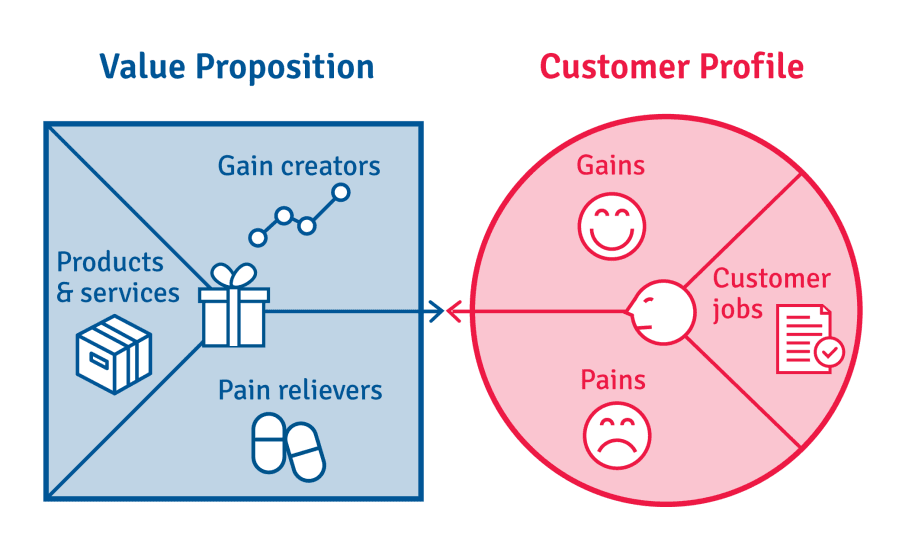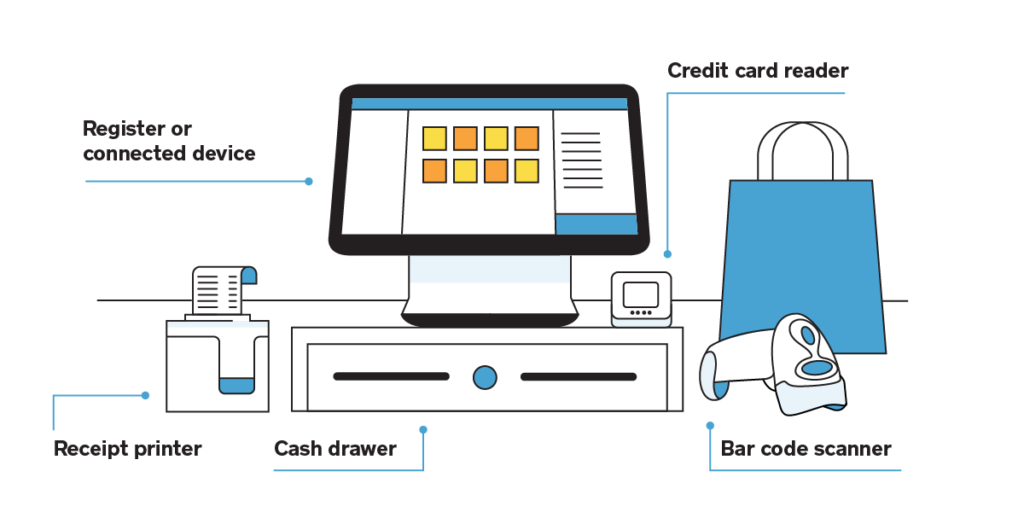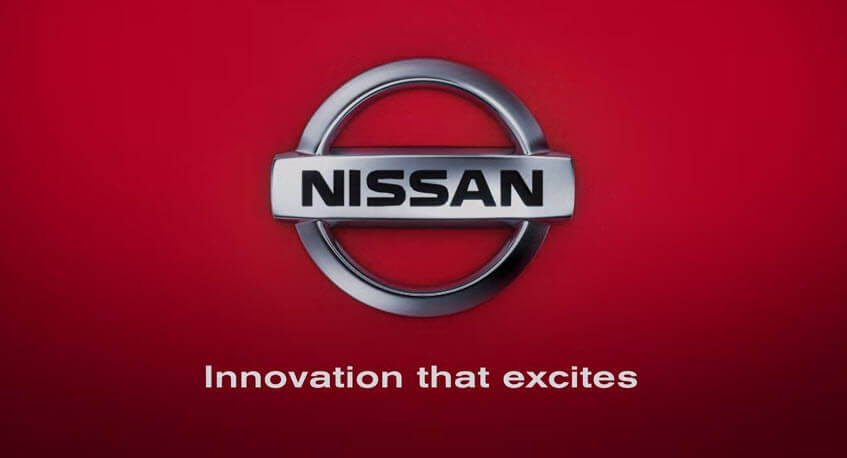Humans are value-rating machines. Every day, all day long, we size up different decisions by appraising the value proposition of that action.
Should I buy this product? Sure, that’s the obvious one. But also:
- Should I go to lunch with this person?
- Should I open this email?
- Should I even spend the time to ponder this decision?
When most marketers think about a value proposition, they’re thinking of the 10,000-foot-view—an overall company value proposition. This can make them feel powerless, especially in a large organization. The CEO controls the company value prop. What can you do?
But there are multiple levels of the value proposition. And understanding the value prop at each level will make you a more effective—and perhaps more fulfilled—marketer. Not convinced? Here’s why you should care.
Table of contents
Why care about the value proposition?
Organizations create value. If they don’t, most are not long for this world.
However, value created is not the same thing as value perceived by the customer. The marketplace is rife with hidden value. The core job of marketing is to discover and articulate that value.
What’s hidden value look like in real life? My wife’s scale stopped working recently, and she tasked me with fixing it. I searched for Taylor scales online, and found an FAQ with a reset protocol. It also said, “If this doesn’t work, email us.” It didn’t work, so I emailed.
Customer service replied but couldn’t help, so they said they would replace it under warranty. I replied and said it’s too old—I don’t even remember when we bought it. They told me to send a picture. Turns out it was from 2013, and they’re sending me a new one!

And yet, I don’t see anything on their homepage or landing pages about their outstanding customer service and warranty. This is a product in the $20–35 range. They didn’t even make me pay to ship the old scale back.
When my daughter broke her JLab Audio headphones, JLab insisted I pay to ship the broken ones back. For $20 headphones, it’s not worth the cost and effort. And JLab promotes its lifetime warranty heavily.
Despite how phenomenal Taylor scales is, you’d never know that hidden value by looking at its website. And there’s the rub: a company providing great value, doing great things. But to potential customers, that value doesn’t exist because they don’t perceive it.
Value props: Challenging? Yes. Fun? Yes.
While discovering and articulating a company’s value proposition is hard, it is fun. It’s what I love about marketing. There are many inventors, researchers, craftsmen, educators, and other value creators in the world who just can’t put the value they create into the right words. You can see the struggle on their face as they try to get their creation out into the world.
Apple is an overused and abused example, but it’s so widely known, let’s trot it out again. Coming up in the advertising industry, I always loved Apple computers. But if you told your friends and family about them, you got a skeptical response. Apple was different, and that was bad.
And then the beautiful brilliance that is Lee Clow collaborated with creatives like Craig Tanimoto and Rob Siltanen and (yes, of course) Steve Jobs to write an ode: “Here’s to the crazy ones [. . .] and while some may see them as the crazy ones, we see genius…”
And now they’re the most valuable public company in the world. Before, they were on the brink of bankruptcy. Sure, they made all sorts of great products when Steve Jobs came back. But Apples were better than PCs even before then. Ask anyone who worked in the advertising industry in the 1990s.
When I was a copywriting intern, I remember an art director who bought stock in pre-Jobs Apple because he loved the product so much. Seemed foolish back then. Today, he probably has a yacht that shuttless him to his bigger yacht. That’s the power of value discovery and clear articulation.
Depending on your political views, modern capitalism is:
- An unbiased innovation machine;
- Unforgiving hellscape;
- Other.
And, in this environment, value-creators will perish (like Apple almost did) without the ability to communicate value.
Personally, as a marketer, I’m rarely good at creating “the thing” myself. So helping these makers communicate the real value they’re adding to the marketplace is fulfilling. My colleague Paul Cheney has even gone so far as to argue that the value proposition makes marketing a morally “good” and worthwhile endeavor.
Harrison McCann said that advertising is “Truth well told.” A value proposition helps you get to that truth, so you can tell it well. These are all the places you should tell it.
What are the four types of value propositions?
The primary value proposition
The primary value proposition is the one you’re familiar with. It’s the value proposition of the brand itself. It’s the explanation of the value the organization is creating in the world. And when communicated credibly and clearly, the value proposition enables the company to meet its business objectives.
Surf around the web, and you’ll find many definitions of a value proposition. We describe a value proposition as the answer to the question, “If I am your ideal customer, why should I buy from you instead of any of your competitors?”
For example, a great value proposition would be:
Because we have the most comprehensive1 and accurate2 lead database.
- 1Includes access to over 210 million U.S. consumers, 14 million U.S. businesses, and 13 million executives.
- 2We have a team of 600 researchers that verify the data daily and make over 26 million verification calls a year—80,000 calls a day.
I won’t go too deep into the primary value proposition in this article since there are many other good resources out there. (CXL has one here.)
Or, you can check out this video in which Flint McGlaughlin, CEO and Managing Director of MECLABS Institute, shows how to amplify the power of your value proposition:
Beyond the primary value prop
Branching out from that primary value proposition are derivative value propositions. They should pull from the main value prop and show how it relates to other elements of the company experience.
For an analogy, let’s look at The Wu-Tang Clan. The group has a primary value proposition. But out of that overall value prop, Method Man has a value prop of his own. The album “Ironman” by Ghostface Killah has a value prop of its own.
While these value propositions are unique in their own way, they draw their power from the group’s main value prop. This quote from the RZA sums up the primary value prop’s effect:
I strive to be like the sun sitting in the middle of the solar system with all the planets spinning around it—millions of things going on. It’s just sitting there being the sun, but exerting gravitational effect on everything.
A good primary value prop has gravity. But it’s not the only thing that matters to the customer. They also need to understand what’s right in front of them. Marketers overlook that at their peril.
Prospect-level value proposition
Unless your company is very small and very targeted, you likely have different types of prospects with different motivations. If we communicate to all of them in the same way, our conversions will suffer.
Many tools can help you. Segmentation. Targeted advertising. Personas. But before doing any of them, you should clearly answer (and distribute to your team or agency, if necessary) the fundamental prospect-level value proposition question:
If I am Prospect [A, B, C, etc.], why should I buy from you rather than any of your competitors?
Sometimes, companies confuse a primary value proposition with a prospect-level value proposition. I recently came across an example. I was helping lead a value proposition workshop, and one of the hypotheses a company had for a primary value proposition was “payment flexibility.”
At a surface level, it seemed sensible. They were the only company in their marketplace that offered this flexibility. Uniqueness is important. But it’s not the only factor in a powerful value proposition.
As I came to understand the payment flexibility, I discovered that only 25% of customers selected that option—the one that was truly unique. The rest choose payment options shared by competitors. An overall value proposition that focused on payment flexibility wouldn’t appeal to three-quarters of their customer base.
However, they hit on something valuable. For the prospect group interested in that payment option, this company was the only place they could get it. That brought up the opportunity to test targeted advertising and messaging around the unique payment offer to attract customers interested in those specific payment terms (not just overall payment flexibility).
They could send that traffic to a unique landing page that highlighted the specific payment option along with other elements of value.
Product-level value proposition
Should you create a new brand when launching a new product? The product-level value proposition can help your organization make that decision.
Get key leaders and stakeholders together, and answer this question:
If I am your ideal customer, why should I buy Product [A, B, C, etc.] instead of any other product?
If the answer doesn’t include elements of the brand’s primary value proposition—if it isn’t influenced by the top-level value prop—consider launching a new brand with a value prop more in line with this product.
It’s always fun to notice when a product-level value proposition doesn’t quite tie into the brand’s primary value proposition. I was shopping for eyeglasses with my daughter, and I noticed some of the glasses were made by Wrangler.
Yes, that Wrangler. Cowboys. Rodeos. Brett Favre being “comfortable in jeans that are tough.” Real. Comfortable. Jeans.
I don’t have data to say they’re wrong. But I will say that when I think of Wrangler’s value proposition, I think of this:
On the other hand, I drive a Nissan LEAF. Nissan could’ve launched a new brand for its electric car. It rebranded the entire company from Datsun back in the 1980s, so it’s no stranger to the possibility.
But while certain elements of LEAF’s product-level proposition are distinct from Nissan’s primary value prop (e.g., zero emissions), the model still connects to the company’s overall value prop. In fact, you might argue that it enhances Nissan’s primary value prop. After all, their tagline is “Innovation that excites.”
There’s one important point that marketers overlook when it comes to the product-level value proposition: Products are more than just cars and toasters and haircuts. Email is a product. Content is a product. A website is a product. Recycling, eating healthy, getting out to vote. Product, product, product.
Marketers have a blind spot for their own products. We focus intensely on our products and are financially rewarded for their success. But customers couldn’t care less about our products. If you tell a marketer that, they logically know it.
However, when we’re in the heat of creating a campaign or a website, it’s all too easy to forget. Creating a product-level value prop forces you to overcome that blind spot.
Process-level value proposition
Some 45% of consumer behavior is habitual. The rest requires a process-level value prop. At this level, you need a value proposition for every action you’re asking someone to take:
- Open an email.
- Follow your brand on social media.
- Go out with you on Friday night.
You need to answer the question,
If I am your ideal customer, why should I [click this PPC ad, read this blog post, listen to your phone call] rather than [click on any other PPC ad, consume any other content, hang up the phone]?
The process-level value proposition is a micro value prop and, as such, can easily be overlooked. It’s unlikely to necessitate a value proposition workshop with key decision-makers (unlike the primary value proposition).
Where are there opportunities for improvement? Buttons are a great place to start. Think, for example, of how many buttons on the Internet simply use the word “Submit.” What is the perceived value of that click?
Here’s an example from a recent experiment for a publisher that encouraged professors to get a physical copy of a textbook mailed to them:
- Treatment 1 button copy: “SIGN IN AND ORDER A SAMPLE.”
- Treatment 2 button copy: “REQUEST A FREE COPY.”
Treatment 2 generated a 132% increase in click-through rate at a 99% level of confidence. For users, the value was hidden behind that button. Our hypothesis was that “copy” (the thing) conveyed a higher perceived value than “sample” (a portion of “the thing”). That, in turn, would persuade more customers to provide information and click the button.
Beyond optimizing the wording of your calls to action, a good understanding of process-level value propositions can help you optimize for conversion in general.
For example, HealthSpire was trying to get Americans 65 and over to call its TeleAgents to choose the right Medicare plan. The original landing page took a familiar approach—focus on the primary value proposition and keep it short. (Rationale: People don’t want to read a long landing page.)
When they tested an approach focused on the process-level value proposition, which used a longer landing page to communicate that value, the team generated 638% more leads for its call center.
Why? It was attuned to the customer’s thought sequence. Nobody wants to be on a sales call, so HealthSpire had to communicate the process-level value proposition of making that call. And they needed a longer landing page to do that. They used the space to add:
- A tip from a real TeleAgent with a picture of the agent;
- A Q&A with a real TeleAgent with a picture of the agent;
- “Our Pledge to You” of what would happen on the call.
Conclusion
If your company has formulated and communicated a clear, credible value proposition to all employees, agencies, vendors, consultants, and partners—congratulations! That is a great first step to effective marketing. (Just make sure you test it with Wynter – see whats your target audience really thinks of it.)
But don’t stop there. As a marketer, you need to understand and use value propositions at every level of customer decision-making.
I’ve separated different levels of value propositions to communicate their differences clearly. But they’re most powerful when used together. In tandem, the biggest question you’re trying to answer—the one that will earn you the most conversions and revenue—is this one:
If I am Prospect [A, B, C, etc.], why should I take [Action A, Action B, Action C, etc.] toward buying Product [A, B, C, etc.] from your company instead of anything else I can do?
Working on something related to this? Post a comment in the CXL community!





I totally loved the concept explained in this blog post. Thanks for sharing your insights. It helps a lot. Thanks for sharing this valuable information with us, it is really helpful article!
Great article, I think some of the best value propositions are the most subtle. It’s intuitive to the prospect but not too pushy.
Thanks Daniel. I keep learning and learning and feel like there is still so much to learn.